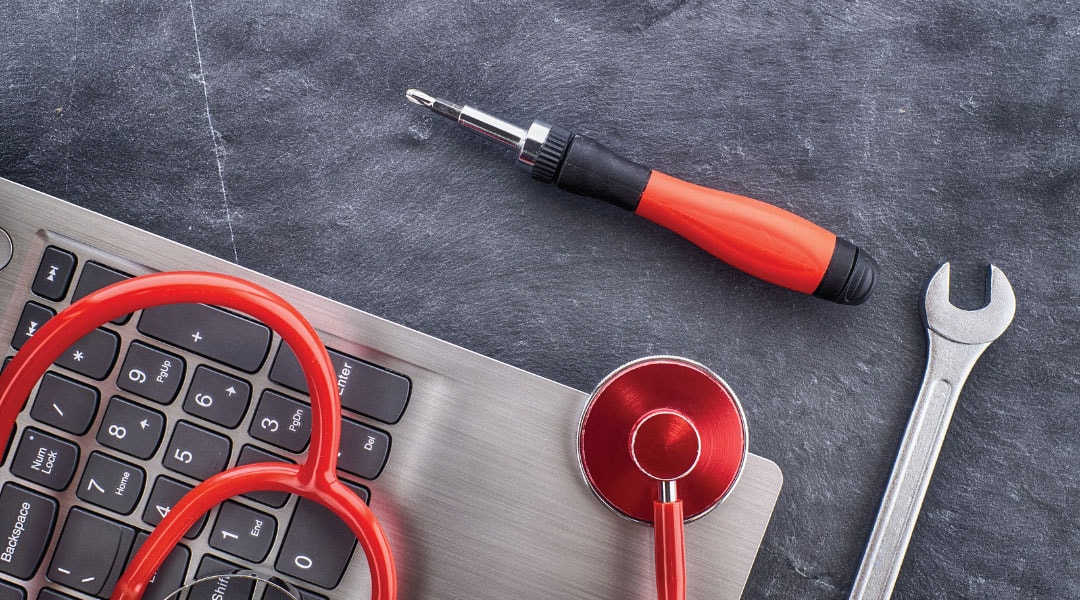
Welcome back to our backup power blog series! If you’re joining us for the first time, feel free to go back and check out our previous posts:
- Backup Power Series: Electricity, Power, and Your IT Infrastructure
- Backup Power Series: Meet the Uninterruptible Power Supply (UPS)
- Backup Power Series: Sizing a UPS
Now that you’re caught up on the importance of the uninterruptible power supply (UPS) and how to figure out what size of one to buy, let’s talk about what you need to successfully use your UPS units long term.
Alerting for UPS State
There are a few key considerations here, one of the most important being alerting. Modern UPS units connect into your network and give you pretty much any piece of information you may need: runtime, input power state, output power state, temperature, etc.
If you have a good monitoring system like PRTG or SolarWinds, you can pull all that information into it and get alerts and monitoring for your entire environment. However, if you don’t have higher-end monitoring software, you can still get alerts and warnings by configuring the UPS itself to send emails when there are issues occurring.
Configuring the UPS Management Software
Being aware of issues isn’t necessarily enough, though. What if the alert comes to you right when you sit down to dinner at a nice restaurant? By the time you notice the alert, get out of the restaurant, and drive home to your computer, the environment may have already run out of power and gone down. This is where network shutdown comes into play.
Modern UPS units have software that can talk directly to your servers and virtualization environment(s) to shut down servers gracefully in the event of a power disruption. This software can make multiple priority groups of servers/VMs and shut them down based on it. You can also make more complicated multi-UPS configurations. Configuring this software is a must if you have a UPS.
Ongoing Maintenance
The “care and feeding” of your UPS is also very important. UPS units are very similar to servers in that they can last anywhere from six to 20 years. Realistically, most people replace them in the six-year range to be a bit proactive (and budgeted) rather than reactive. There are stories of people keeping the same UPS for 20 years, but at that point the technology is old, the software is most likely incompatible, and the actual longevity/reliability of the UPS is questionable. These are electrical devices and much like servers – at some point, things can wear out and start failing. Regardless of the age of the UPS itself, though, one part that definitely needs regular attention and maintenance is the batteries.
Batteries in a UPS are mostly still lead acid, similar to a car battery. As with that application, there’s only a certain number of times the batteries can be charged/discharged before they no longer work. Unlike a car battery, however, UPS batteries are constantly being charged/used, which decreases their life even more. Batteries can last anywhere from three to five years. Unfortunately, there’s no real way to know how long they are going to last, just like how you don’t know your car battery is nearing the end of its life until you try to use it one freezing morning and it doesn’t work.
To the UPS, it will seem like the batteries are healthy and showing proper voltage, but the only way to really know for sure is to use them. I’ve seen multiple situations where old batteries showed a full charge, and they showed 15-40 minutes of runtime when the entire environment started running on them. Just five minutes later, though, the batteries suddenly died, and everything went down hard.
Testing a UPS is a scary thing. If you leave the environment running, shut off the land power, and discover the batteries aren’t good, it may run a few minutes. But if you shut everything down before you test the batteries, there’s no load, so you don’t know if it is going to actually last the whole time. Due to this widespread inability to regularly test, most people recommend proactive battery replacements every three to four years to make sure the batteries are going to be there when needed.
A lot goes in to taking care of your UPS, but they’re all very important when it comes to reliability. Our experts can ensure you’re getting the most out of your UPS and backup power.
Check out our next blog, where we will be concluding our Backups Power Series by talking about external considerations that often go overlooked, and how they can impact your UPS and IT environment.
If you want help assessing your backup power arrangement or just have some questions about how to go about it, we’re here to help: send us an email or give us a call at 502-240-0404!